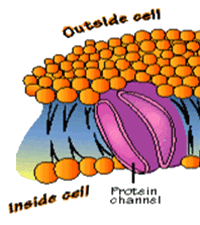In bygone days, we believed that our genes pretty much determined our destiny. Through a new field of inquiry known as epigenetics, we’ve learned that most of our genes simply provide the blueprints by which we manufacture substances to construct and maintain our cellular structures, tissues, and organs. These blueprints do not self-actuate. Rather, something in the environment triggers (or inhibits) their activity. Cell membranes play a crucial role in genetic expression as they are gatekeepers for environmental influence.
Dr. Bruce H. Lipton’s book entitled The Biology of Belief: Unleashing the Power of Consciousness, Matter, and Miracles was my first port of call when diving into the world of cellular biology. Prior to becoming a best-selling author and lecturer, Dr. Lipton had a distinguished career as a researcher and medical school professor. Among his strengths is the ability to translate complex science into everyday language and illustration. Here’s what I’ve learned from him.
Our bodies make and use over 100,000 distinct proteins – chains of amino acids held together by peptide bonds – using templates stored in our DNA. These chains are “shape shifters,” bending and contorting as a function of the electrical attraction and repulsion of positive and negative electrons that comprise the chain. They also adjust shape in response to changes in their electrical charges caused by: (i) binding to other molecules or chemical groups (e.g., hormones), (ii) adding or removing some of their charged ions, and (iii) exposure to external energy fields.
 Cell membranes contain a variety of Integral Membrane Proteins (IMPs) that traverse their erstwhile impermeable walls. Each IMP is designed to match the charge of a specific type of molecule or vibrational energy and change shape when coming into contact with it – much like a lock and key. When the charge is introduced, the altered shape of the receptor IMP may allow substances to gain access to the cell’s interior. It may also actuate effector proteins inside the cell to read and act upon genetic instruction.
Cell membranes contain a variety of Integral Membrane Proteins (IMPs) that traverse their erstwhile impermeable walls. Each IMP is designed to match the charge of a specific type of molecule or vibrational energy and change shape when coming into contact with it – much like a lock and key. When the charge is introduced, the altered shape of the receptor IMP may allow substances to gain access to the cell’s interior. It may also actuate effector proteins inside the cell to read and act upon genetic instruction.
Receptor IMPs are also sensitive to energy signatures. Dr. Lipton reminds us that quantum physics characterizes atoms as vortices of energy in continual motion (spinning, vibrating). Each atom, molecule, and collective of molecules manifests its own energy signature. Manipulation of the quantum properties of matter – e.g., exposure to external energy fields (microwave radiation, radio frequencies, cell phones) – influences the course of biochemical reactions. In fact, electromagnetic signals provide a far more efficient means to relay environmental information than chemical carriers (hormones, neurotransmitters, growth factors). As such, the energy fields with which we habitually come into contact may well influence the environment within our cells and, hence, our genetic expression.
Thoughts – the mind’s energy – also impact our cellular environment. For example, research has shown that deep rest induced by practices like meditation, yoga, deep breathing, and prayer produce positive changes in genetic expression with respect to immune function, energy metabolism, and insulin secretion. In addition, many medical practitioners embrace the “placebo effect” – i.e., belief in a treatment even when no drugs or procedures are actually employed – as an effective treatment for ailments. Belief may simply activate the body’s intrinsic healing mechanisms. In the words of Mahatma Gandhi:
Your beliefs become your thoughts.
Your thoughts become your words.
Your words become your actions.
Your actions become your habits.
Your habits become your values.
Your values become your destiny.
Dr. Lipton warns that only a small percentage of our thoughts are controlled by our conscious mind. Our subconscious mind stores a warehouse of beliefs, behaviors, and attitudes based on what we’ve experienced in our families, our peer groups, and our life journeys. It initiates behaviors automatically in response to environmental signals. Such behaviors can be useful – e.g., driving a car (somewhat subconsciously) while carrying on a conversation (consciously). They can be harmful when we act in ways that seem in conflict with what we say we believe. Fortunately, we can disrupt our “autopilot” by paying attention to our knee-jerk reactions, stopping the associated behaviors, and creating new responses.
All of the foregoing causes me to marvel at the wondrous complexity of the human body and its capacity to adapt and respond to a variety of environmental inputs. It also makes me conscious of all of the ways in which I exert control over my body – for my betterment or my peril – and encourages me to adopt healthy behaviors.